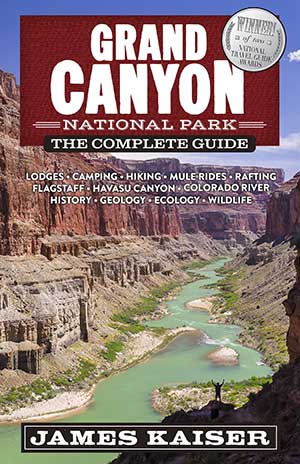
Grand Canyon’s geology is one of the most striking aspects of the park. There are few locations on the planet with so many eye-popping rock formations on display in a single place. It’s safe to say that, had they been located elsewhere, many of these individual rock formations would be world-famous landmarks on their own. But within the depths of Grand Canyon they occur by the dozen. Rainbow-splashed mesas, temples, and buttes cascade down from the rim, extending for miles in either direction.
Visually, there is so much to see—so many colors, textures, and shadows—that your sense of perspective often melts away. The scope of the scenery is dizzying, which is what makes staring out into Grand Canyon so much fun.
Even if you know nothing about geology, Grand Canyon is still an impressive sight. But take the time to learn about the forces that created it, and you’ll look upon the Canyon with a fresh set of eyes. Suddenly, what was once amazing will become astounding. What once took your breath away will make your head spin.
On a human timescale, Grand Canyon seems ancient, peaceful, and serene. On a geologic timescale, however, it is young, violent, and exciting. Geologists were shocked to discover that Grand Canyon was created in less than six million years. When you consider that the Earth is over four billion years old, six million years seems like the blink of an eye. It’s as if northern Arizona suddenly just cracked open and—bam!—there was Grand Canyon.
In reality, northern Arizona was sliced open by the Colorado River. After tumbling down from the Rockies, the Colorado twists and turns through the desert Southwest, picking up an enormous amount of sediment along the way. This sediment—a mixture of gravel, silt and clay eroded from the region’s soft rocks—scrapes along the bottom of the river like sandpaper. During massive floods, when 100-ton boulders are tumbled like ice cubes, the rate of erosion accelerates exponentially. All told, the river has cut downward at a rate of about 6.5 inches every 1,000 years.
Over the past six million years, the Colorado has sliced through northern Arizona like a knife through a wedding cake. In the process, it has exposed dozens of layers of progressively older rocks, giving Grand Canyon one of its most defining characteristics: it is one of the few places in the world where you can view almost two billion years of Earth history just by glancing up and down.

Ancient Rocks of Grand Canyon
Most rocks in Grand Canyon are sedimentary rocks, which form when sediments such as sand, silt, or mud gather in thick layers that, over time, are compressed into rock. Grand Canyon’s sedimentary rock layers accumulated over millions of years on the prehistoric surface of northern Arizona, which has been home to giant sand dunes, muddy river deltas, and shallow tropical seas over the past 500 million years. These environments formed as ancient continents drifted across the globe and ancient oceans advanced and retreated over those continents. Eventually, eroded sediments from each of these environments formed distinct layers of sedimentary rocks. Sand dunes were cemented into sandstone, mud was compressed into shale, and the discarded shells of marine animals were cemented together into limestone.
Because Grand Canyon’s rocks were laid down chronologically, one on top of another, they reflect a geological relationship known as superposition. Simply put, superposition means that the rocks above are younger than the rocks below. Move your eyes from the rim to the river and you are essentially staring back into time. At the bottom of the Canyon you’ll find the region’s oldest exposed rocks: Vishnu Schist and Zoroaster Granite. These rocks, referred to as the Precambrian Rocks of the Inner Gorge, are the only common rocks in Grand Canyon that are not sedimentary. Vishnu Schist is a metamorphic rock that formed roughly 1.7 billion years ago when intense heat and pressure transformed previously formed shale into schist. About 200 million years later, magma shot up into cracks in the schist and cooled into beautiful veins of pink Zoroaster Granite…
Continued in Grand Canyon: The Complete Guide


